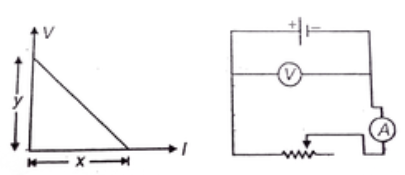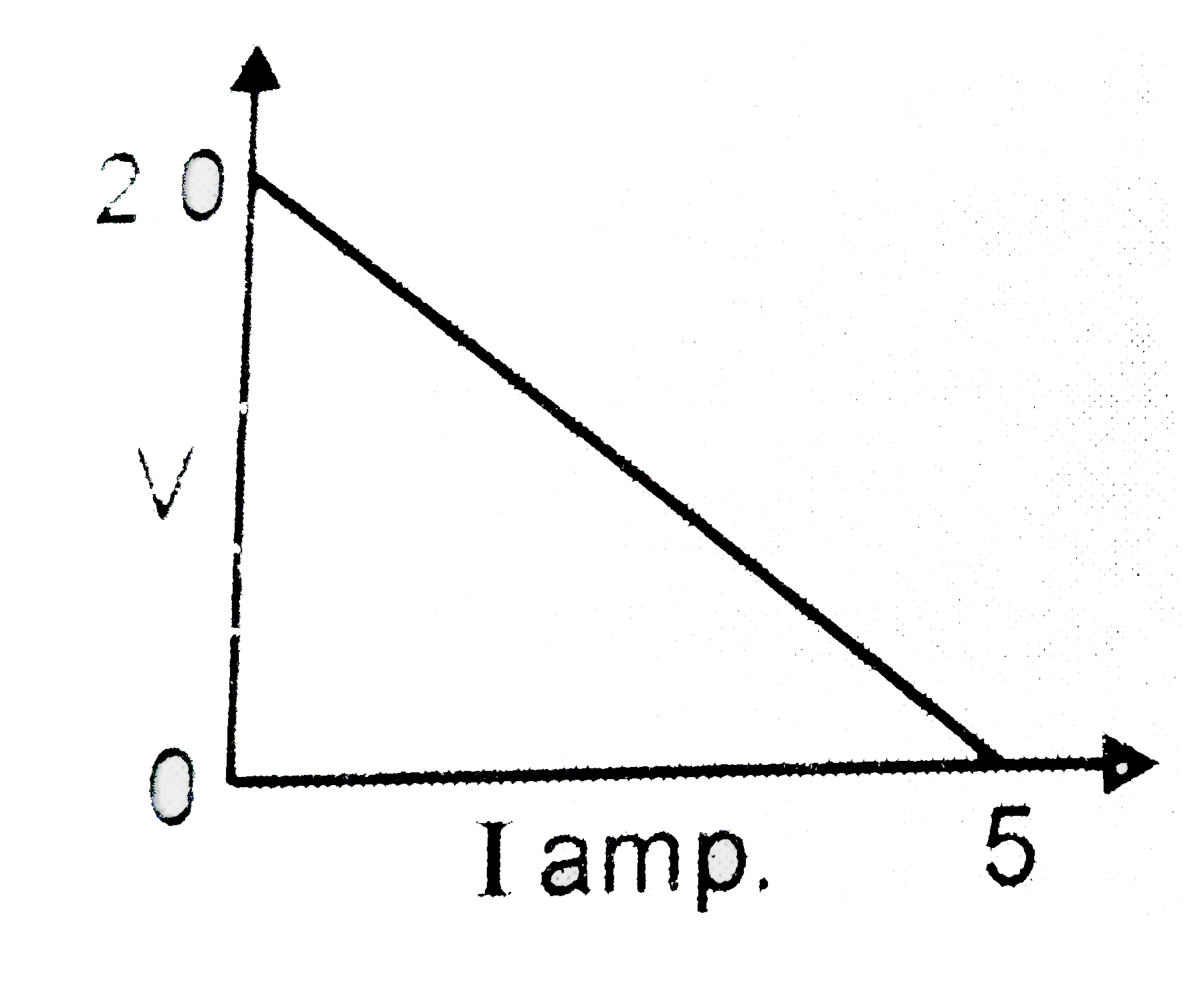The poten tial difference between the terminals of a cells is found to be 3 volts when it is connected to a resistance equal to its internal resistance. The e.m.f. of the cell is:-
3V
6V
1.5v
4.5V
The correct Answer is:2
To solve the problem, we need to find the electromotive force (e.m.f.) of the cell given that the potential difference across the terminals is 3 volts when connected to a resistance equal to its internal resistance.
1. Understand the Circuit Configuration:
- Let the internal resistance of the cell be r.
- The external resistance connected to the cell is also r.
- The total resistance in the circuit is R+r=r+r=2r.
2. Apply Ohm's Law:
- The total current I flowing through the circuit can be expressed using Ohm's Law:
I=ERtotal=E2r
- Where E is the e.m.f. of the cell.
3. Calculate the Potential Difference:
- The potential difference V across the terminals of the cell is given as 3 volts.
- According to the formula for potential difference:
V=I×R
- Here, R is the external resistance, which is equal to r:
V=I×r
4. Substituting for Current:
- Substitute I from step 2 into the equation for V:
V=(E2r)×r
- Simplifying this gives:
V=E2
5. Setting Up the Equation:
- We know from the problem statement that V=3 volts:
E2=3
6. Solving for E.m.f.:
- Multiply both sides by 2 to isolate E:
E=3×2=6 volts
Final Answer:
The e.m.f. of the cell is 6 volts.
- Let the internal resistance of the cell be r.
- The external resistance connected to the cell is also r.
- The total resistance in the circuit is R+r=r+r=2r.
- The total current I flowing through the circuit can be expressed using Ohm's Law:
I=ERtotal=E2r
- Where E is the e.m.f. of the cell.
- The potential difference V across the terminals of the cell is given as 3 volts.
- According to the formula for potential difference:
V=I×R
- Here, R is the external resistance, which is equal to r:
V=I×r
- Substitute I from step 2 into the equation for V:
V=(E2r)×r
- Simplifying this gives:
V=E2
- We know from the problem statement that V=3 volts:
E2=3
- Multiply both sides by 2 to isolate E:
E=3×2=6 volts
The e.m.f. of the cell is 6 volts.
Topper's Solved these Questions
Similar Questions
For the determination of emf E and internal resistance 'r' of a cell , the graph is obtained between potential difference V between the terminal of the cell against the current l, which was changed by adjusting the rheostat, is as shown . The internal resistance of the cell is

View SolutionFor a cell, the terminal potential difference is 2.2V, when circuit is open and reduces to 1.8V. When cell is connected to a resistance R=5Ω, the internal resistance of cell (R) is
View SolutionFor a cell, the terminal potential difference is 2.2V, when circuit is open and reduces to 1.8V. When cell is connected to a resistance R=5Ω, the internal resistance of cell (R) is
View SolutionFor a cell, the graph between the potential difference (V) across the terminals of the cells and the current I drawn from the cell is as shown in figure. Calculate the e.m.f. and the internal resistance of the cell.

View SolutionA cell of emf E is connected across a resistance R. The potential difference between the terminals of the cell is found to be V. The internal resistance of the cell must be -
View SolutionA cell of e.m. E and internal resistance r is connected across a resistancer. The potential difference between the terminals of the cell must be
View SolutionA cell supplies a current of 2 A when it is connected to a 5Ω resistance and supplies a current of 1.2 A, if it is connected to a resistance of 9 Ω. Find the e.m.f and internal resistance of the cell.
View SolutionThe reading on a high resistance voltmeter when a cell is connected across it is 3 V. When the terminals of the cell are also connected to a resistance of 4 Ω, then the voltmeter reading drops to 1.2 V. Find the internal resistance of the cell.
View SolutionWhen a resistance of 2 ohm is connected across terminals of a cell, the current is 0.5A. When the resistance is increased to 5 ohm, the current is 0.25A The e.m.f. of the cell is
View SolutionThe terminal voltage is E2 when a c urrent of 2A is flowing through 2Ω resistance, then the internal resistance of cell is:-
View Solution
